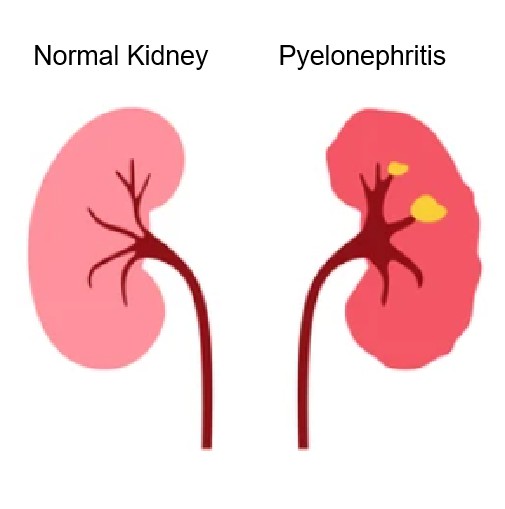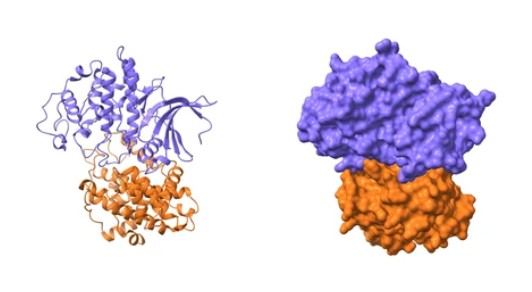Glomerulonephritis Therapeutic Targets
Related Symbol Search List
Immunology Background
Available Resources for Study of Glomerulonephritis Therapeutic Targets
At Creative BioMart, our focus is on leading the way in glomerulonephritis research. We strive to keep our product offerings and resources up-to-date, ensuring that researchers have the most advanced tools and information available to drive progress in this crucial field of study.
- We offer a diverse range of products, including recombinant proteins and other essential materials that are vital in revealing the mechanisms of glomerulonephritis. We understand that each researcher has unique requirements, which is why we offer a wide selection of products tailored to their specific needs.
- Our team of experienced experts in glomerulonephritis research are highly knowledgeable and passionate about their work. They are dedicated to providing customized and individualized solutions to meet the specific requirements of every researcher.
- Furthermore, we provide comprehensive support resources that encompass involved pathways, protein functions, interacting proteins, and other valuable information. We aim to empower researchers to gain a comprehensive understanding of glomerulonephritis and enhance the impact of their research.
Our Featured Products
- Active Recombinant Human Chemokine (C-X-C Motif) Ligand 10, HIgG1 Fc-tagged
- Recombinant Human CXCL10, GST-tagged
- Recombinant Human CXCL10 Protein, Myc/DDK-tagged
- Recombinant Caprine CXCL10 Protein
- Recombinant Dolphin CXCL10 Protein
- Recombinant Guinea Pig Cxcl10 Protein
- Recombinant Human MAPK14 protein(Met1-Ser360), His-tagged
Whether you are studying glomerulonephritis pathology, drug discovery, or treatment development, Creative BioMart is here to support your research. We are committed to helping you achieve your scientific goals and make meaningful contributions to the field of glomerulonephritis research. Contact us today to learn more about our products and resources.
About Glomerulonephritis
The glomerulonephritides comprise a group of immunologic diseases that damage the renal glomerulus, the filtering unit of the kidney. This network of capillaries, fed and drained by the afferent and efferent arterioles, respectively, filters plasma across the fenestrated endothelium, glomerular basement membrane (GBM), and podocyte slit diaphragms to collect in Bowman's space. Filtrate is dramatically modified as it passes through a series of tubules before delivery to the renal pelvis for excretion. The approximately 2 million glomeruli in normal adult kidneys filter over 150 liters of plasma per day. With this constant exposure and high filtering capacity, it is perhaps not surprising that the glomerulus is susceptible to injury from immune cells and their soluble products.
Glomerulonephritides are defined as inflammation and cell proliferation in the glomerulus, although injury typically extends to the renal tubules, interstitium, and vasculature. Common clinical findings include hematuria, proteinuria, and/or decreased glomerular filtration rate, detected as elevation in creatinine, often accompanied by hypertension, edema, and disease-specific findings. Immunopathogenesis is generally attributed to autoimmunity, exacerbated by a local renal immune and inflammatory response.
Glomerulonephritis can have various etiologies and may be classified into primary or secondary forms. Primary glomerulonephritis refers to cases where kidney inflammation is the primary disease, whereas secondary glomerulonephritis occurs as a result of an underlying condition or disease.
Primary Glomerulonephritis
- Immunological factors: In primary glomerulonephritis, the immune system mistakenly targets the glomeruli, leading to inflammation and tissue damage. The exact causes are not always clear, but immune dysregulation, genetic predisposition, and abnormal immune responses, such as the deposition of immune complexes or antibodies in the glomeruli, are thought to play a role.
- Examples of primary glomerulonephritis include IgA nephropathy, membranous nephropathy, focal segmental glomerulosclerosis (FSGS), and minimal change disease.
Secondary Glomerulonephritis
- Secondary glomerulonephritis occurs as a result of an underlying disease or condition that affects the kidneys.
- Systemic diseases: Conditions like systemic lupus erythematosus (SLE), vasculitis (e.g., granulomatosis with polyangiitis), and diabetes can cause secondary glomerulonephritis.
- Infections: Certain infections, such as streptococcal infection (post-streptococcal glomerulonephritis), hepatitis B and C, and HIV, can lead to glomerulonephritis.
- Drug-induced: Some medications, including nonsteroidal anti-inflammatory drugs (NSAIDs), certain antibiotics, and some blood pressure-lowering medications, can cause glomerular inflammation.
- Other conditions: Conditions like hypertension, preeclampsia (in pregnancy), and certain cancers can also lead to glomerulonephritis.
The development mechanism involves a complex interplay of immune responses, genetic factors, environmental triggers, and underlying diseases. Inflammation and immune responses lead to the release of various substances that damage the glomeruli, including cytokines, complement proteins, and reactive oxygen species. This damage can disrupt the filtration process, impair kidney function, and, in some cases, progress to chronic kidney disease.

The Treatment Targets of Glomerulonephritis
Research on therapeutic targets for glomerulonephritis aims to understand the molecular mechanisms and pathogenic pathways involved in the disease. While specific targets may vary depending on the type and underlying cause of glomerulonephritis, here are some prominent therapeutic targets currently being studied:
Cytokines and Chemokines
- Cytokines and chemokines are small signaling molecules that play a crucial role in immune responses and inflammation.
- Targeting specific cytokines or chemokines, such as tumor necrosis factor-alpha (TNF-α), interleukin-6 (IL-6), interleukin-17 (IL-17), and transforming growth factor-beta (TGF-β), is being explored to modulate the inflammatory response in glomerulonephritis.
Complement System
- The complement system is a part of the immune system that helps in the clearance of pathogens and debris. Dysregulation of the complement system can contribute to glomerulonephritis.
- Inhibitors targeting complement components, such as C3 and C5, or their receptors are being investigated as potential therapeutic options.
T-cell Co-stimulation
- T-cell co-stimulation molecules are involved in activating T cells and promoting immune responses.
- Inhibiting co-stimulatory pathways, such as CD28-B7 or CD40-CD40L, is being explored as a potential treatment strategy for glomerulonephritis.
Extracellular Matrix Remodeling
- The extracellular matrix (ECM) provides structural support to the glomeruli. Abnormal ECM remodeling can contribute to glomerular damage.
- Targeting enzymes involved in ECM remodeling, such as matrix metalloproteinases (MMPs), are being studied to prevent or slow down glomerular fibrosis and scarring.
Reactive Oxygen Species (ROS)
- Increased production of reactive oxygen species can cause oxidative stress and damage in glomerulonephritis.
- Antioxidant therapies or agents that target ROS production are being investigated to reduce oxidative stress and protect the kidneys.
Janus Kinase (JAK) Pathway
- The JAK-STAT pathway is involved in cytokine signaling and immune cell activation.
- JAK inhibitors, such as tofacitinib and ruxolitinib, are being studied for their potential to modulate inflammatory responses in glomerulonephritis.
Podocyte and Endothelial Cell Function
- Podocytes and endothelial cells play critical roles in maintaining the integrity and function of the glomerular filtration barrier.
- Therapies targeting podocyte and endothelial cell dysfunction are being explored to preserve glomerular structure and function.
These targets represent ongoing areas of research and are not yet widely established as therapeutic options for glomerulonephritis. Clinical trials and preclinical studies are essential for evaluating the safety and efficacy of interventions targeting these pathways and molecules.
It's important to note that glomerulonephritis encompasses various subtypes with distinct underlying mechanisms, and treatment approaches may vary accordingly.

Reference:
- Foster MH. Novel targets for immunotherapy in glomerulonephritis. Biologics. 2008;2(3):531-545. doi:10.2147/btt.s2764

